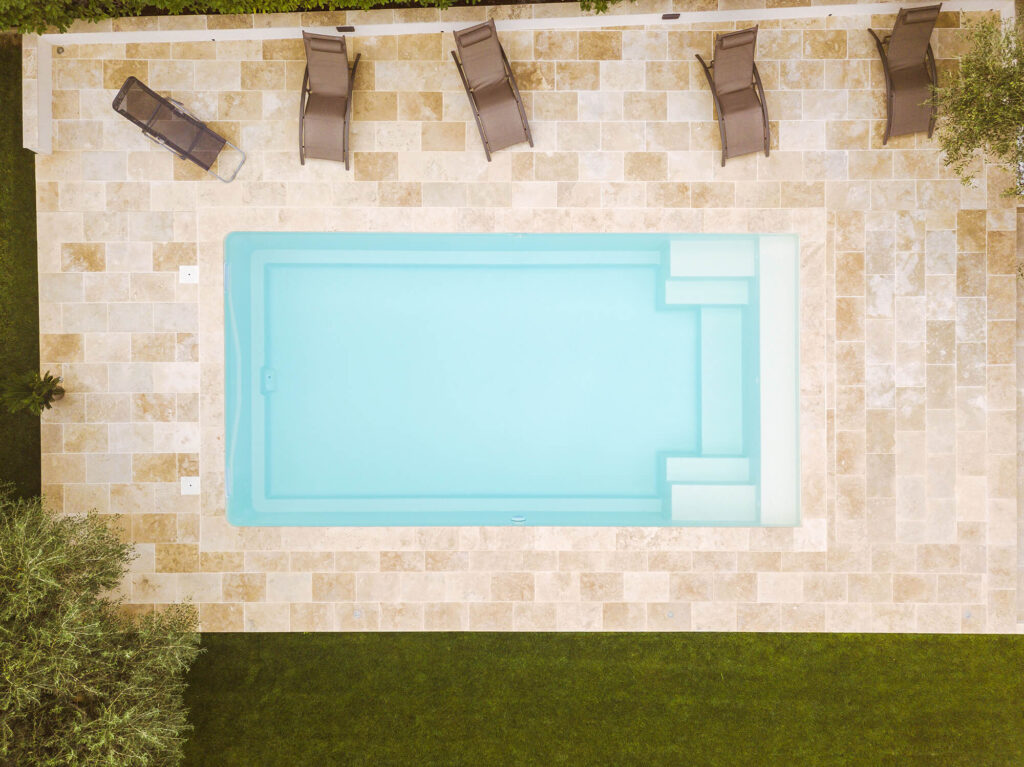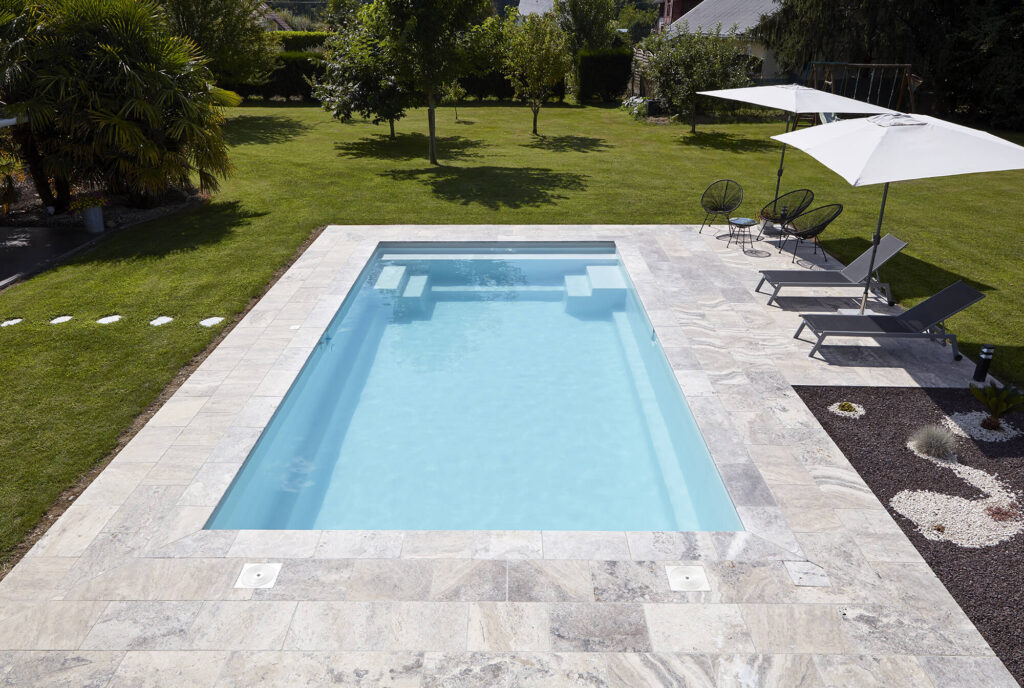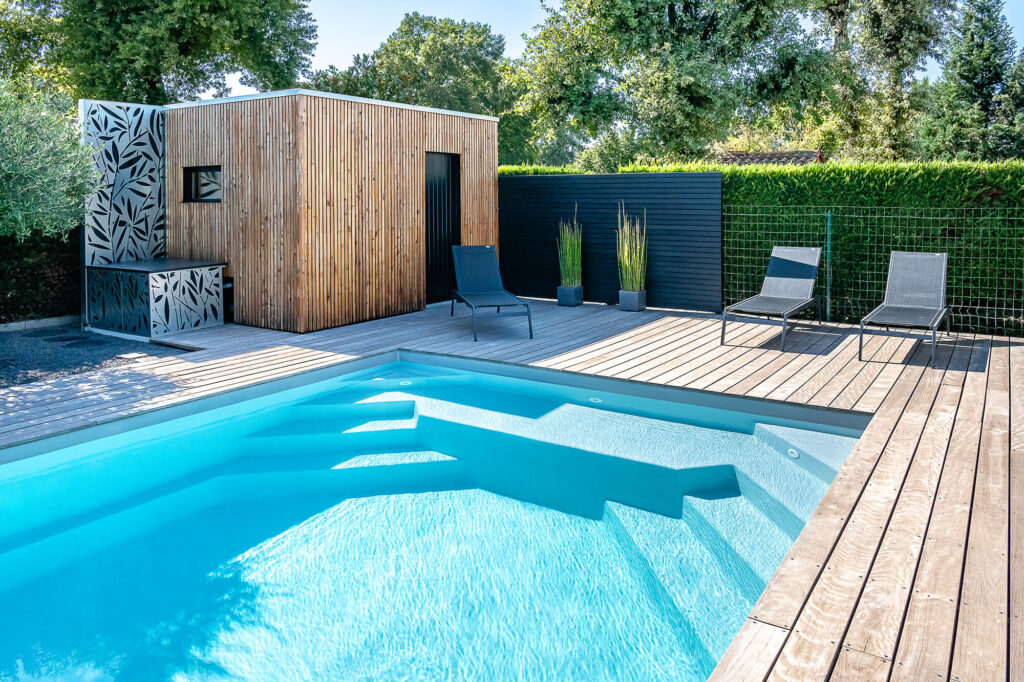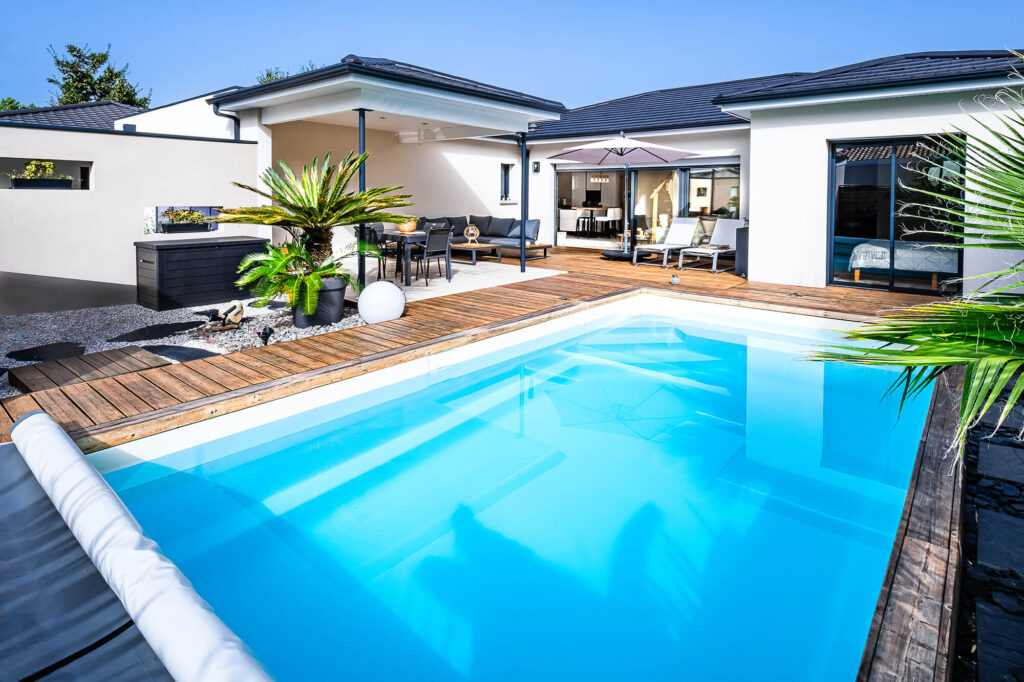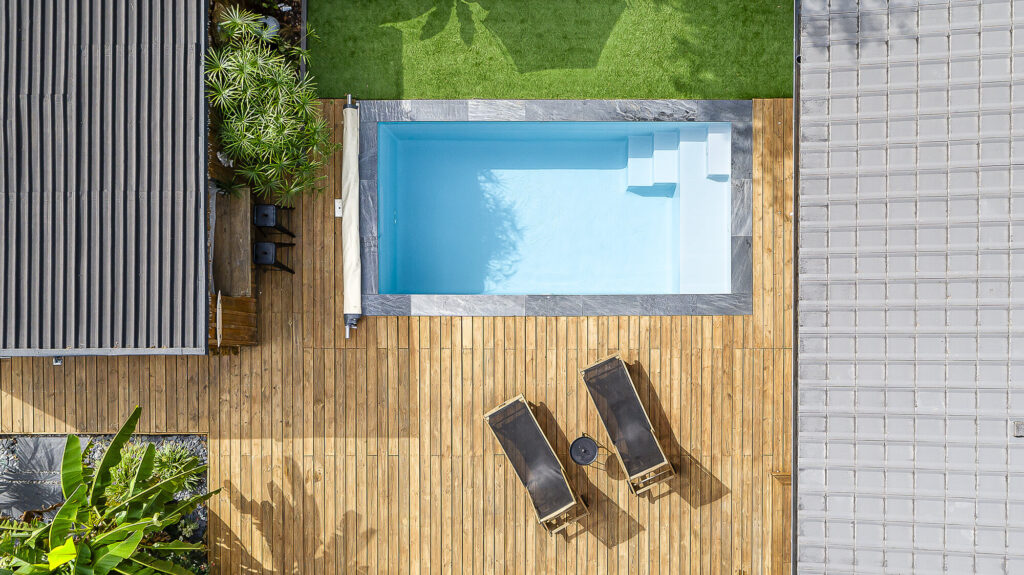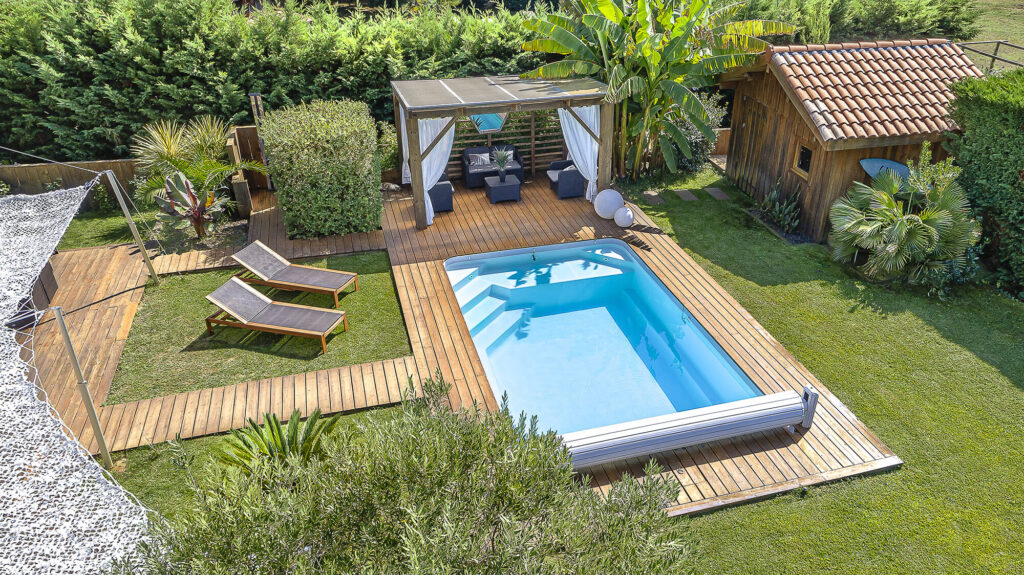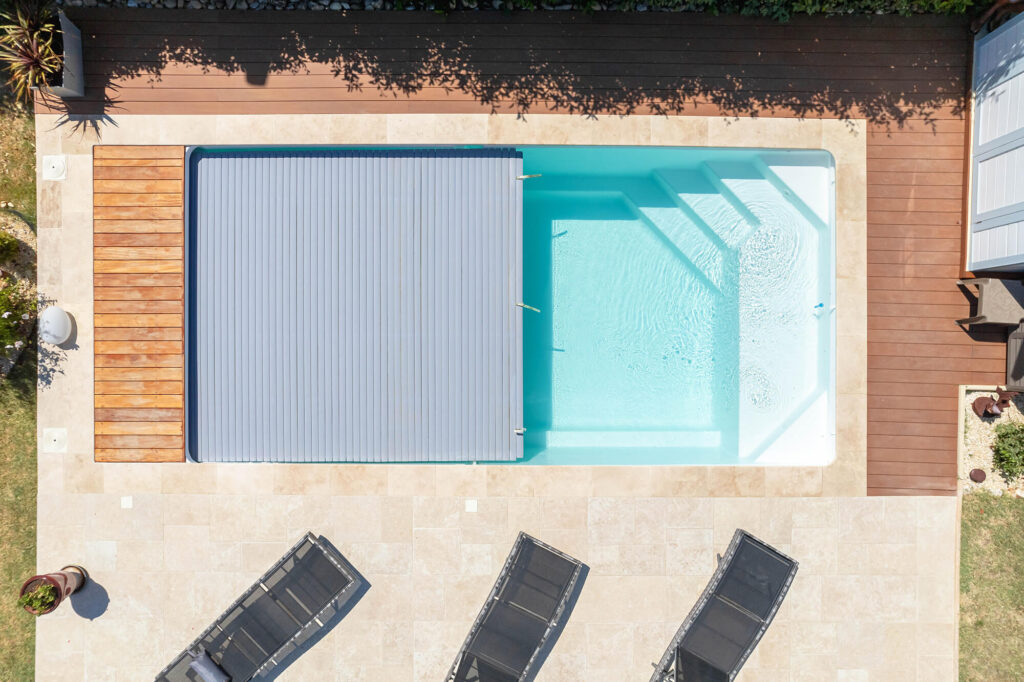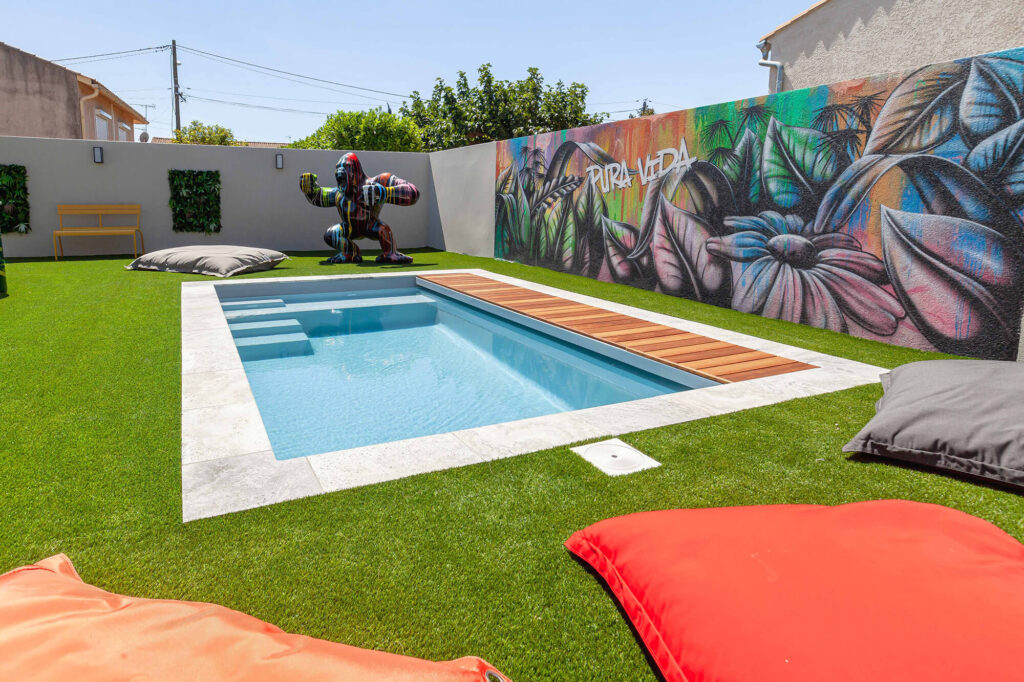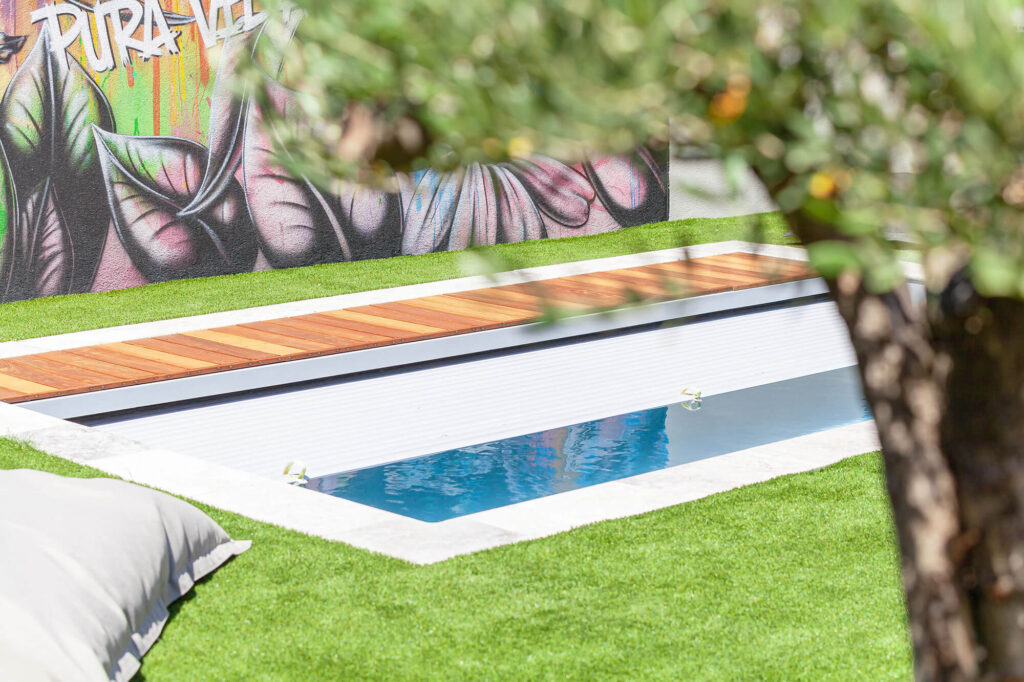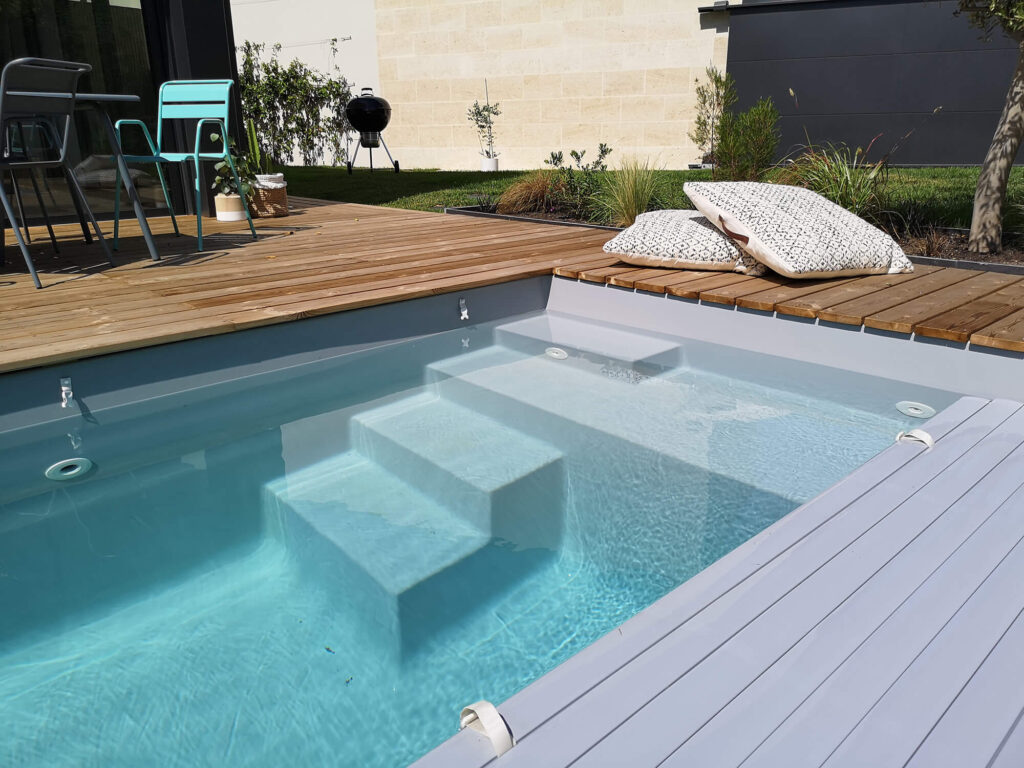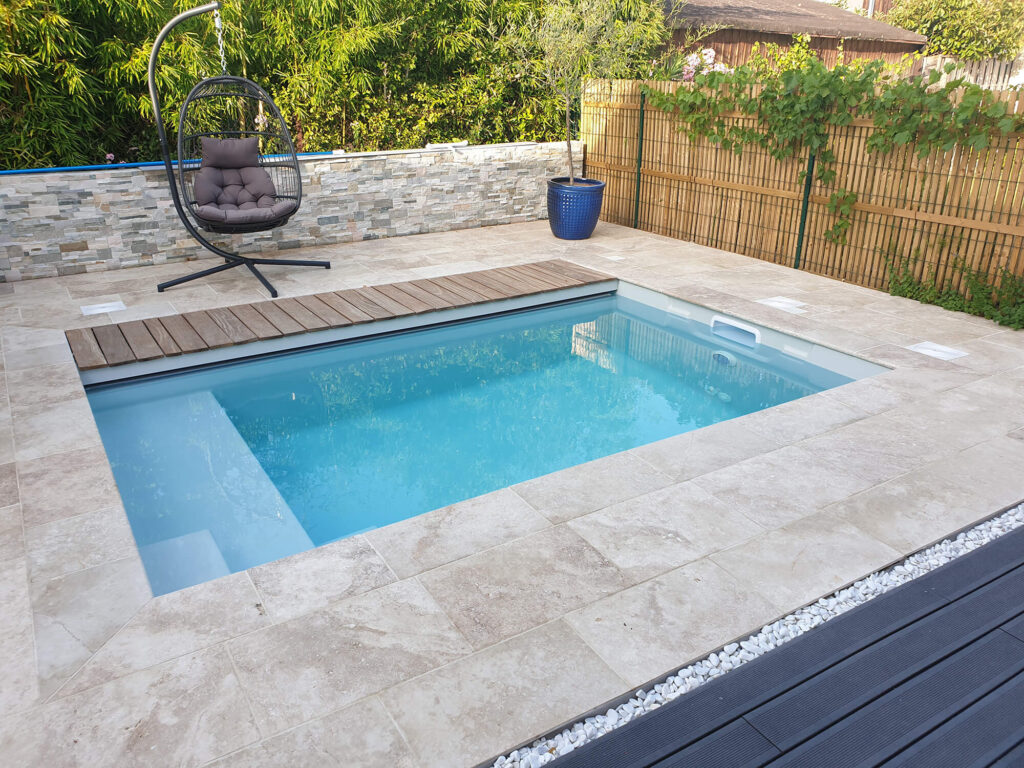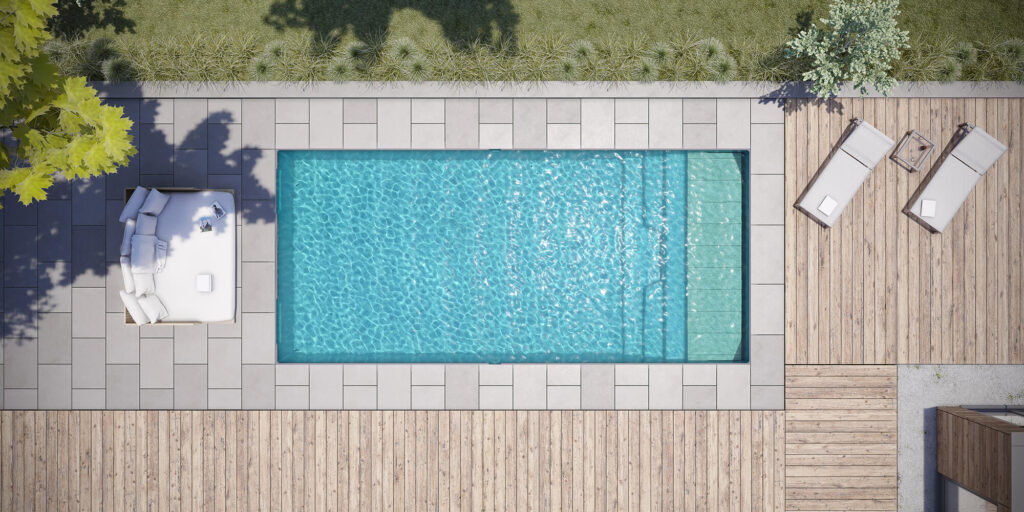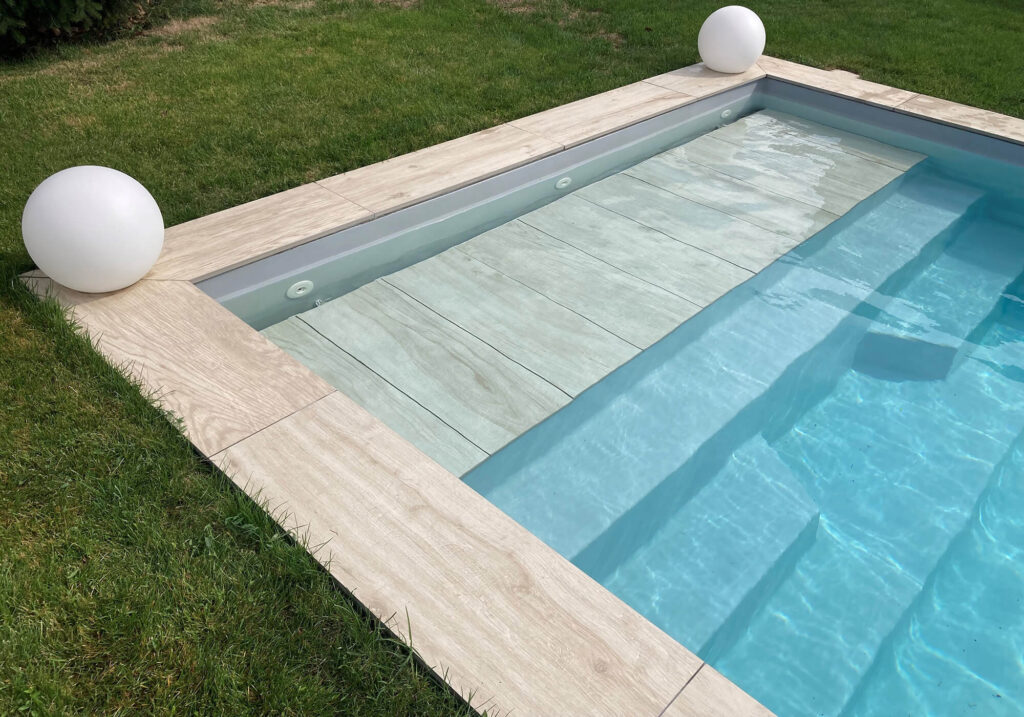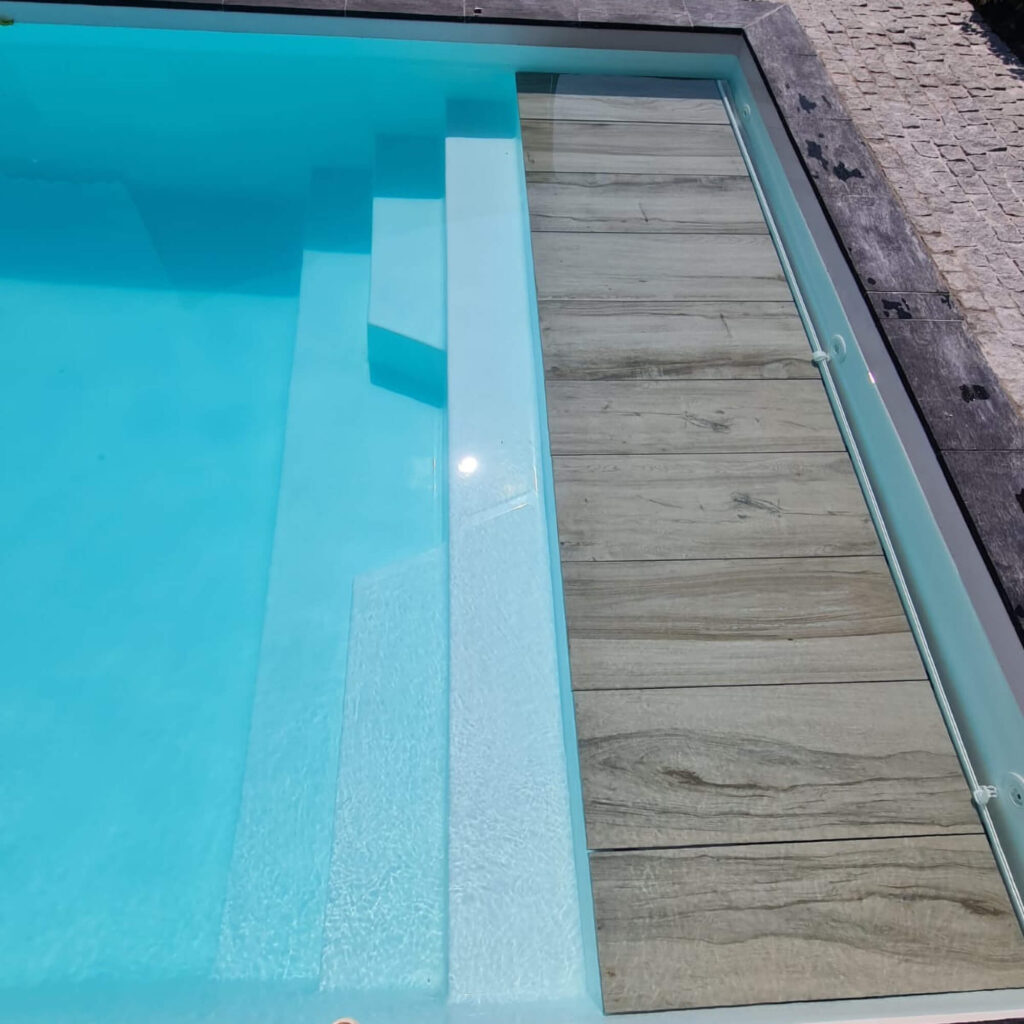Si le renouvellement annuel de ¼ de votre eau de piscine est généralement suffisant pour conserver une eau saine et propre toute l’année, il existe certains cas particuliers pour lesquels vous devrez vidanger votre piscine entièrement.
Par exemple, si l’eau de la piscine reste verte malgré l’utilisation d’un traitement adapté, nous vous recommandons de vider votre piscine coque. Il en est de même si la coque de votre bassin est entartrée (parois et fond grisâtres) ou endommagée.
Cependant, la vidange n’est pas sans risque pour votre bassin. En effet, mal réalisée, elle peut endommager la structure de votre piscine coque polyester de façon irréversible.
Alors pour éviter les mauvaises surprises, découvrez dans les lignes qui suivent nos conseils pour vider l’eau de votre bassin en toute sécurité.
Législation : peut-on vider une piscine coque ?
Avant de vous lancer dans la vidange de votre bassin, il est important de savoir que l’évacuation des eaux d’un bassin privé est soumise à une réglementation. En effet, l’article R1331-2 du Code de la santé publique interdit d’introduire des eaux de vidange de piscine dans les réseaux d’assainissement collectif (c’est-à-dire, au tout-à-l’égout).
Votre bassin est raccordé au réseau collectif d’eau pluviale ? Dans ce cas, vous avez l’autorisation d’évacuer l’eau de votre piscine à condition d’avoir arrêté le traitement de l’eau (chlore, brome, etc.) au moins 15 jours avant. En effet, les eaux pluviales étant déversées dans la nature, il est primordial de vider le bassin sans polluer l’environnement.
Quoi qu’il en soit, n’effectuez pas de vidange sans avoir, au préalable, effectué une demande d’autorisation à votre commune. Pensez également à vous renseigner sur les conditions à respecter lors de la vidange (débit maximum autorisé, etc.) et à prévenir vos voisins.
Pourquoi vider sa piscine ?
Lorsque l’entretien de la piscine est effectué correctement, il n’est pas nécessaire de renouveler entièrement l’eau de votre piscine tous les ans. En effet, l’utilisation d’un aspirateur, d’un robot de piscine et d’un système de filtration efficace permet bien souvent de conserver une eau propre et saine.
Vider sa piscine coque pour changer l’eau de sa piscine ne doit se faire que tous les 4 ou 5 ans et ce, quel que soit le type de bassins (piscine en béton, piscine tubulaire, piscine hors-sol ou piscine enterrée).
D’autres raisons peuvent également vous amener à vider l’eau de votre bassin :
- Une eau de piscine qui reste verte en raison du développement d’algues à l’intérieur du bassin. Ce phénomène apparaît notamment lors des variations de température de l’eau ou au moment de l’hivernage de la piscine, dès lors qu’une étape a mal été réalisée ;
- Une coque de piscine entartée. Pour se débarrasser de cette pellicule grisâtre qui recouvre les parois et le fond du bassin, vous devrez procéder à la vidange et au nettoyage de ce dernier.
- Un mauvais équilibre de l’eau, provoqué par un taux de stabilisant trop élevé.
- Une usure du revêtement ou des fissures sur la coque nécessitent également d’avoir un bassin vide pour effectuer les travaux de rénovation ou de réparation.
Comment vider sa piscine coque ?
Votre piscine est verte, entartrée ou endommagée ? Vous devez donc procéder à la vidange. Pour que cette dernière s’effectue sans accroc, il est nécessaire de ne pas brûler les étapes…
1. Ne videz pas l’eau de votre piscine en hiver
À la question, “faut-il vider sa piscine en hiver ?”, la réponse est non !
Et la raison à cela est simple : en hiver, il y a de grandes chances que les sols qui entourent votre bassin soient gorgés d’eau, faisant pression sur la coque de votre piscine. Le risque est donc de voir la structure sortir de son assise.
De plus, avec les températures qui baissent, le risque de gel est plus important en hiver. Cela peut provoquer une dégradation des parois, de la structure ou encore, des canalisations. Il faut donc impérativement éviter le gel.
Pour ne pas endommager la coque polyester de votre bassin, nous vous recommandons d’effectuer la vidange dès l’apparition des beaux jours, au printemps. À cette période, le sol a déjà commencé à sécher ; il exercera alors moins de pression sur la coque de votre bassin.
Pour profiter des baignades pendant la saison estivale, pensez donc à consulter régulièrement la météo afin de trouver le moment opportun pour réaliser la vidange !
2. Arrêtez le traitement de votre piscine
Le printemps est installé et vous avez pris la décision de vider votre bassin dans les jours qui arrivent ? Pensez également à respecter les 15 jours de délai sans verser de produits chimiques afin de ne pas polluer les sols.
Pendant ce temps, contactez votre commune afin de prendre connaissance des précautions complémentaires à prendre et prévenez vos voisins d’éventuelles infiltrations par le sol.
3. Videz l’eau de votre bassin en plusieurs fois
Pour vider l’eau de votre piscine, la technique la plus simple consiste à vidanger à l’aide d’un tuyau d’arrosage. Les pompes sont également efficaces pour effectuer la vidange en tout simplicité. Pour éviter tout risque d’inondation et laisser le temps à l’eau de s’évacuer, veillez toutefois à vider l’eau de votre bassin en plusieurs fois.
Dès lors que votre bassin est vidé, veillez à laisser au minimum 20 cm d’eau à l’intérieur de votre piscine afin d’éviter que la structure ne sorte de son assise. Outre le niveau d’eau, l’installation de poutres dans le sens de la largeur peut également être utile pour maintenir le fond de la piscine en place pendant toute la durée de la vidange. Toutefois, prenez soin de protéger le revêtement au niveau des points de contact, à l’aide de chiffons ou de plaques de carton.
Enfin, ne tardez pas à remplir de nouveau votre bassin : moins elle passera de temps sans eau et mieux elle se portera !
Configurez votre piscine en ligne Revenir à toute l'actualité

